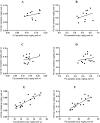Environmental Parasitology: intestinal helminth parasites of the siganid fish Siganus rivulatus as bioindicators for trace metal pollution in the Red Sea
- PMID: 30838973
- PMCID: PMC6402366
- DOI: 10.1051/parasite/2019014
Environmental Parasitology: intestinal helminth parasites of the siganid fish Siganus rivulatus as bioindicators for trace metal pollution in the Red Sea
Abstract
Studies on host-parasite systems as bioindicators for monitoring trace metal pollution in marine environments are still scarce. Here, 11, 14 and 17 infrapopulations of Gyliauchen volubilis (Trematoda: Digenea), Procamallanus elatensis (Nematoda) and Sclerocollum rubrimaris (Acanthocephala), respectively, were collected from the fish Siganus rivulatus (Siganidae) in the Red Sea, from a chronically polluted small bay at Sharm El-Sheikh, South Sinai, Egypt. Water and sediment samples from the bay, tissue samples (intestines, liver, and muscle) from each fish, and samples from each parasite were taken for heavy metal analyses of cadmium and lead. Cadmium concentrations in intestines, liver and muscle of non-infected and infected fishes were much lower than those of lead, and both metal concentrations decreased in the order: liver > intestines > muscle. Cadmium and lead concentrations in the tissues of fishes infected with G. volubilis or P. elatensis were slightly lower than those in non-infected ones, while in the tissues of fishes infected with Sc. rubrimaris, they were much lower. Low concentrations of cadmium and lead in G. volubilis and P. elatensis are associated with their limited ability or capacity to accumulate trace metals. Therefore, bioconcentration factors corresponding to these species were relatively low, and both are herein considered as weak bioindicators. By contrast, high concentrations of cadmium and lead in S. rubrimaris are associated with its high ability to accumulate trace metals. Of the present three host-parasite systems, only the Siganus rivulatus-Sclerocollum rubrimaris system seems to be promising for biomonitoring of metal pollution in the Red Sea.
Les études sur les systèmes hôte-parasite utilisés comme bioindicateurs pour surveiller la pollution par les métaux à l’état de traces dans les environnements marins sont encore rares. Ici, 11, 14 et 17 infrapopulations, respectivement de Gyliauchen volubilis (Trematoda : Digenea), Procamallanus elatensis (Nematoda) et Sclerocollum rubrimaris (Acanthocephala), ont été prélevées chez le poisson Siganus rivulatus (Siganidae) en Mer Rouge, dans une petite baie chroniquement polluée à Sharm El-Sheikh, Sinaï Sud, Égypte. Des échantillons d’eau et de sédiments de la baie, des échantillons de tissus (intestin, foie, muscles) de chaque poisson et des échantillons de chaque parasite ont été prélevés pour des analyses de métaux lourds (cadmium et plomb). Les concentrations de cadmium dans l’intestin, le foie et le muscle de poissons infectés et non infectés étaient bien inférieures à celles de plomb, et les concentrations de métaux diminuaient dans l’ordre suivant : foie > intestin > muscle. Les concentrations de cadmium et de plomb dans les tissus des poissons infectés par G. volubilis ou P. elatensis étaient légèrement réduites par rapport à celles des poissons non infectés, alors qu’elles étaient fortement réduites dans les tissus des poissons infectés par S. rubrimaris. Les faibles concentrations de cadmium et plomb chez G. volubilis et P. elatensis sont associées à leur capacité limitée à accumuler des métaux traces. Ainsi, les facteurs de bioconcentration correspondant à ces espèces étaient relativement faibles et les deux sont considérées ici comme des bioindicateurs faibles. Par contre, les fortes concentrations de cadmium et plomb chez Sc. rubrimaris sont associées à sa grande capacité à accumuler des métaux à l’état de traces. Parmi les trois systèmes hôte-parasite présents, seul le système Siganus rivulatus–Sclerocollum rubrimaris semble être prometteur pour le suivi biologique de la pollution par les métaux en Mer Rouge.
© Z.M. Al-Hasawi, published by EDP Sciences, 2019.
Figures



References
-
- Al-Jahdali MO. 2012. Infrapopulations of Procamallanus elatensis Fusco & Overstreet, 1979 (Nematoda: Camallanidae) in the rabbitfish Siganus rivulatus (Teleostei, Siganidae) from the Saudi coast of the Red Sea. Journal of Helminthology, 86, 378–385. - PubMed
-
- Al-Jahdali MO, Hassanine El-Said RM. 2012. The life cycle of Gyliauchen volubilis Nagaty, 1956 (Digenea: Gyliauchenidae) from the Red Sea. Journal of Helminthology, 86, 165–172. - PubMed
-
- Al-Khatani AM. 2009. Accumulation of heavy metals in Tilapia fish (Oreochromis niloticus) from Al-Khadoud Spring, Al-Hassa, Saudi Arabia. American Journal of Applied Sciences, 6, 2024–2029.
-
- Amin O. 2013. Classification of the Acanthocephala. Folia Parasitologica, 60, 273–305. - PubMed
MeSH terms
Substances
LinkOut - more resources
Full Text Sources
